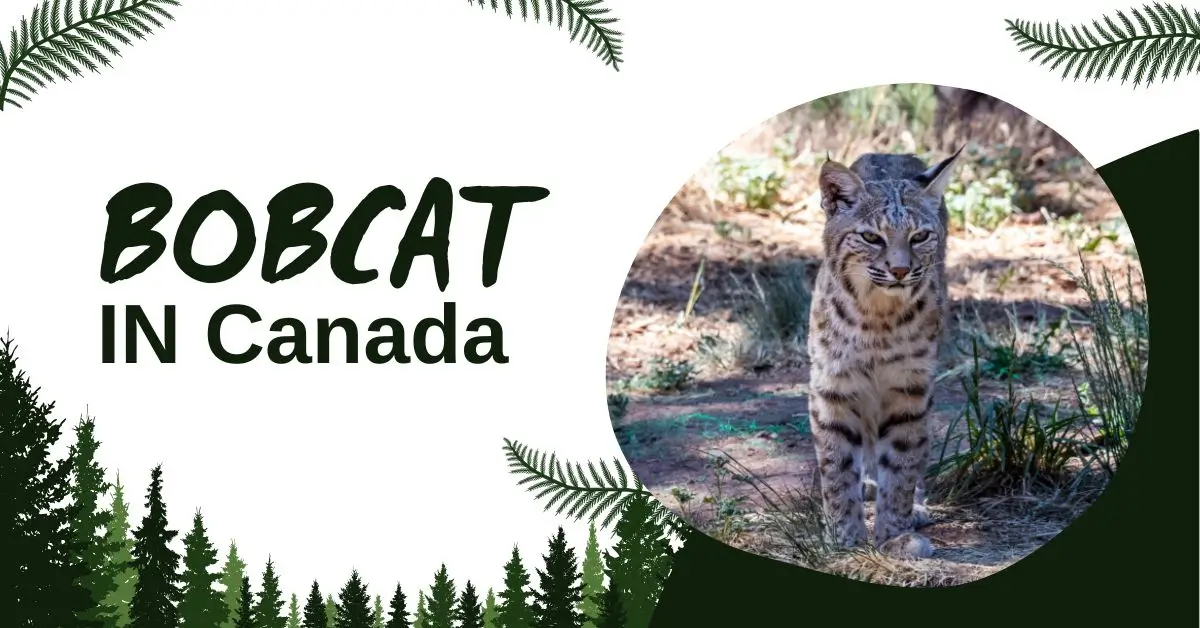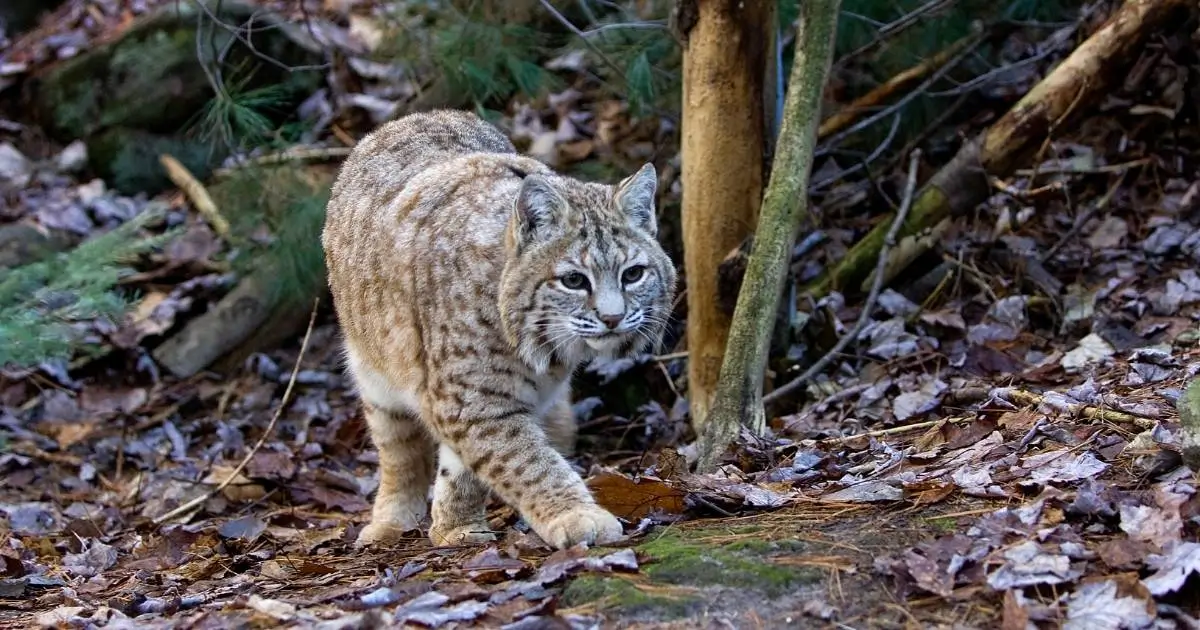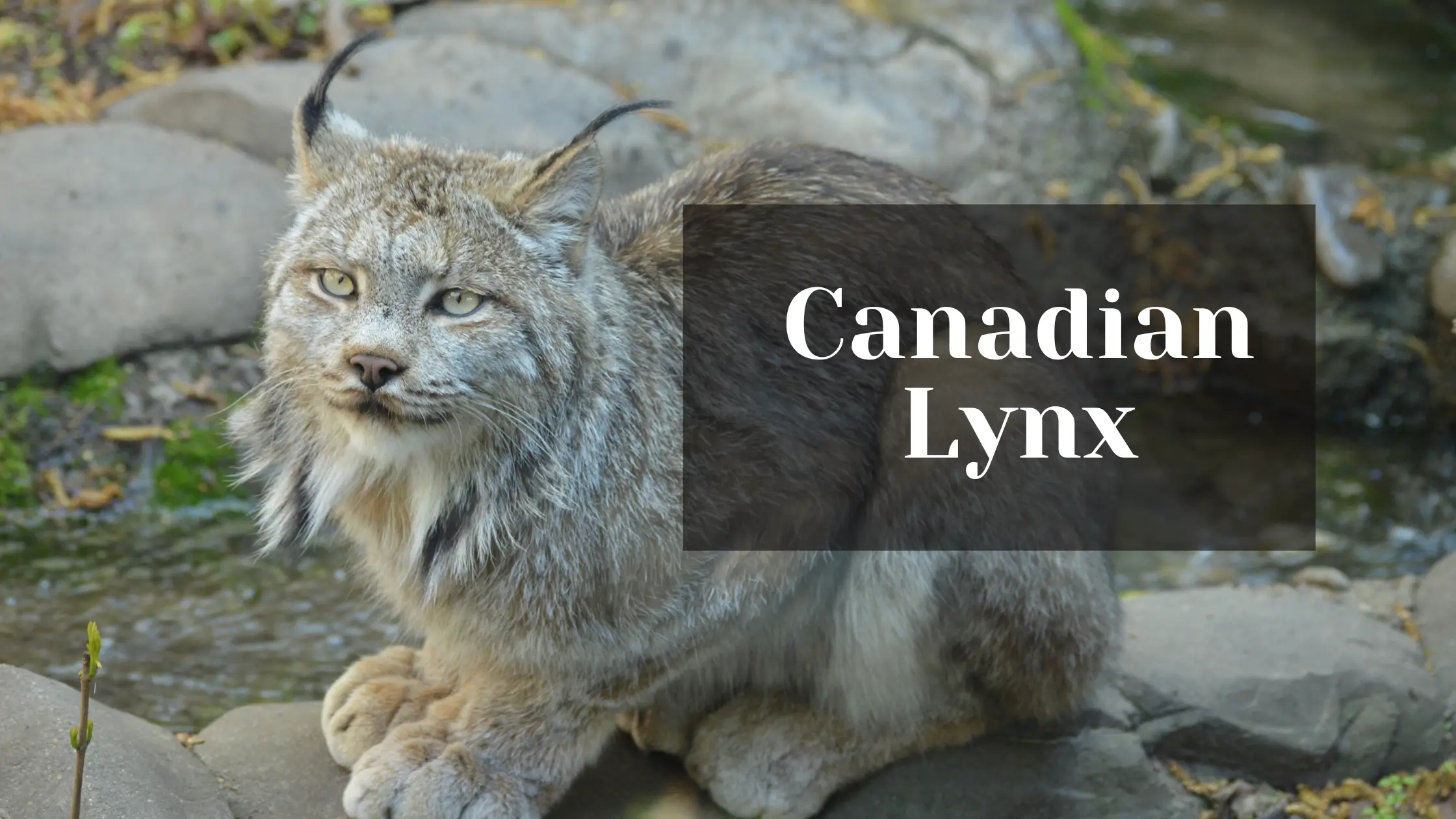The bobcat is a wild cat that lives in many parts of Canada. It has a short tail that looks cut off and pointy ears with tufts of fur. It’s about two times bigger than a house cat. Its fur helps it hide in nature. Bobcats like to hunt mostly when the sun is rising or setting. They catch and eat small animals like rabbits and birds. Bobcats live in different places from woods to areas near towns and cities but they are difficult to spot.
The bobcat is a wild cat that lives in many parts of Canada. Bobcats are shy and they like to hide, so they’re hard to see. They usually live by themselves.
Physical Characteristics and Features

Following are some of the attractive features of Bobcat that make their appearance eye-catching;
| Features | Relevant Information |
| Scientific Name | Lynx rufus |
| Life Span | About 13 to 15 years |
| Diet | Rabbits, Small Birds, Lizards, Crrions and Snakes |
| Size | 15 to 20 inches lengthwise |
| Other Names | Bay lynx, Wild Cat, and Lynx Cat |
| Average Weight | For males, it is 6 to18 kg
For females, it is 4 to 15 kg |
| Role in Ecosystem | Top-level predators of food chain that help control the population of rodents and rabbits |
| Habitat | Deserts, Spruce-pine forests, Swamplands, and Urban outreaches |
| Status of specie | Not Endangered |
Interesting Facts About Bobcats in Canada
Here is a list of some interesting facts about the bobcat that can attract the attention of visitors;
1. Size Comparison
Consistent with Bergmann’s rule, Canadian bobcats exhibit larger body sizes compared to their southern counterparts.
2. Historical Significance
Indigenous peoples in Canada have long respected the bobcat for its hunting prowess and incorporated it into their folklore.
3. Winter Adaptation
Bobcats in Canada grow thicker fur coats during winter to withstand harsh temperatures.
4. Hunting Technique
These secretive cats are expert hunters, known for their ability to lie in wait for hours before striking.
5. Name Origin
The bobcat’s name originates from its distinctive short tail, a trait common among these cats in Canada and other regions.
6. Nocturnal Nature
Bobcats are mostly active at night, making them elusive to human observation.
7. Solitary Lifestyle
Except during mating season, Canadian bobcats are solitary animals with large individual territories.
8. Climbing Ability
They are excellent climbers and often use trees for resting, hunting, and escaping predators.
9. Swimming Capability
Unlike many cats, bobcats are capable swimmers and will cross bodies of water if necessary.
10. Vocalizations
Canadian bobcats have a range of vocalizations, including screams that can be mistaken for a person in trouble.
11. Unique Fur Pattern
Each bobcat has a unique fur pattern like the human fingerprints, allowing researchers to identify individuals.
12. Adaptability to Human Presence
Some Canadian bobcats have adapted to urban and suburban environments, coexisting with humans.
Subspecies of Bobcat in Canada
Two major subspecies of Bobcat are known to exist in Canada;
1. Lynx rufus gigas
It is typically darker in color and adapted to eastern Canadian forests and coastal areas. They can prey on larger animals due to their size which are adapted to the humid continental climate of eastern Canada.
2. Lynx rufus pallescens
It generally possesses pale coloration indicated by its name “pallescens” meaning pale. They live in varied habitats including mountains, forests, and prairies of western Canada. These typically hunt smaller prey and adapt to more diverse climates, including drier regions in parts of its range.
Sightseeing of Bobcat in Canada
These animals inhabit the diverse habitat of Canada and hence can be seen in different states.
| Direction of the Country | Places Where Bobcats are Found |
| Western Region | British Columbia and Alberta |
| Eastern Region | Quebec, New Brunswick, Nova Scotia, and Prince Edward Island |
| Central Region | Ontario, Manitoba, and Saskatchewan |
Best Time and Month to See Bobcats in Canada
The following mentioned seasons are ideal for capturing the image of bobcats in the wild.
| Season | Months for Sightseeing |
| Spring | March to April |
| Winters | January to February |
Pro Tip: These animals exhibit opposite behavior and are mostly active from dawn to dusk.
FAQs
1. What is the difference between a lynx and a bobcat?
Lynx and bobcats are both wild cats found in Canada, but lynx are larger with longer legs and bigger paw pads. Bobcats have shorter ear tufts and spotted coats while lynx have plain grayish-brown fur. You’re more likely to see a bobcat in southern areas and a lynx in northern forests in Canada.
2. What to do if you see a bobcat?
If you spot a bobcat in Canada then stay calm and don’t approach it. Make yourself look big by raising your arms and slowly backing away while making noise. Bobcats usually avoid humans, so give them space and they’ll likely leave on their own.
3. How dangerous is a bobcat?
Bobcats in Canada are generally not dangerous to humans. They’re shy and prefer to avoid people. However, they may become aggressive if cornered or protecting their young. It’s best to keep your distance and enjoy these beautiful creatures from afar.
4. Which is more dangerous a bobcat or a mountain lion?
A mountain lion is more dangerous than a bobcat. While bobcats are common in Canada, they rarely attack humans due to their smaller size. Mountain lions pose a greater threat because they’re larger and more powerful predators.
5. How much is the size difference between wild bobcats size house cats?
Bobcats are typically 2-3 times larger than house cats. A wild bobcat usually weighs 15-35 pounds, while an average house cat weighs 8-10 pounds. This size difference helps distinguish bobcats from domestic cats when spotted in Canadian wilderness areas.
6. How much is the size difference between bobcats in comparison to dogs?
Bobcats are smaller than most dog breeds weighing about 15-35 pounds. They’re about the size of a medium-sized dog, like a border collie. However, large male bobcats can sometimes be as big as a small German shepherd.







